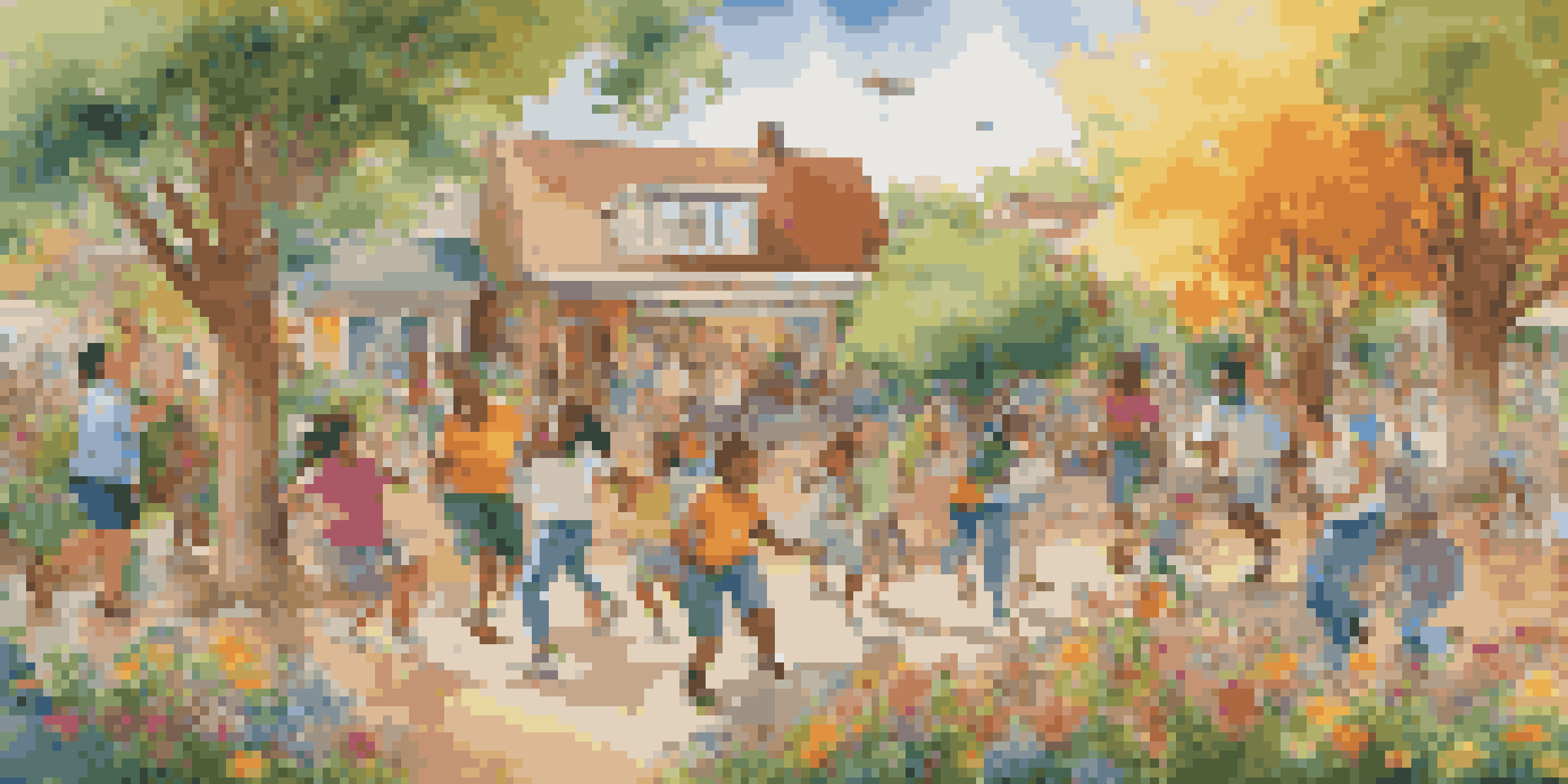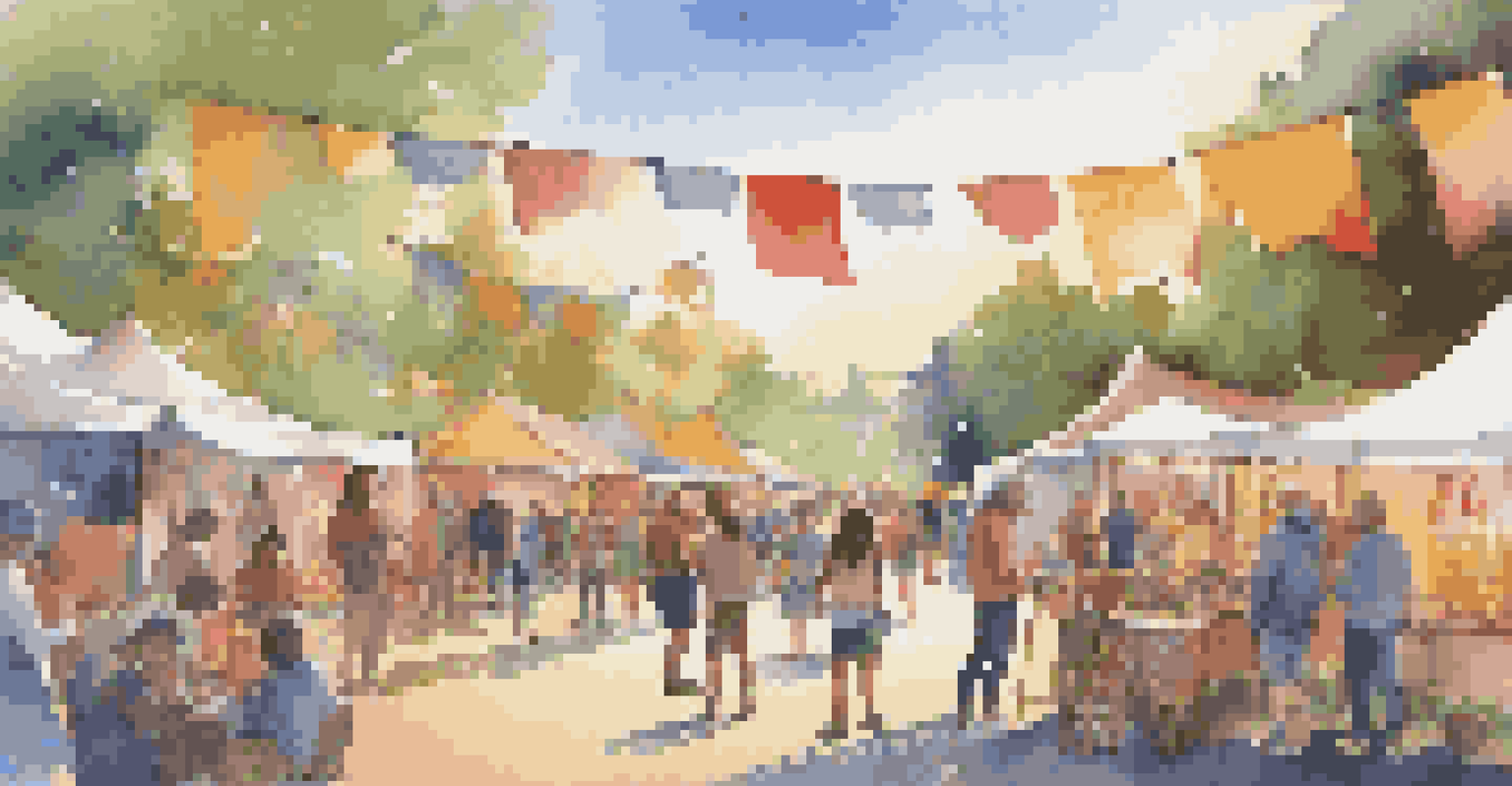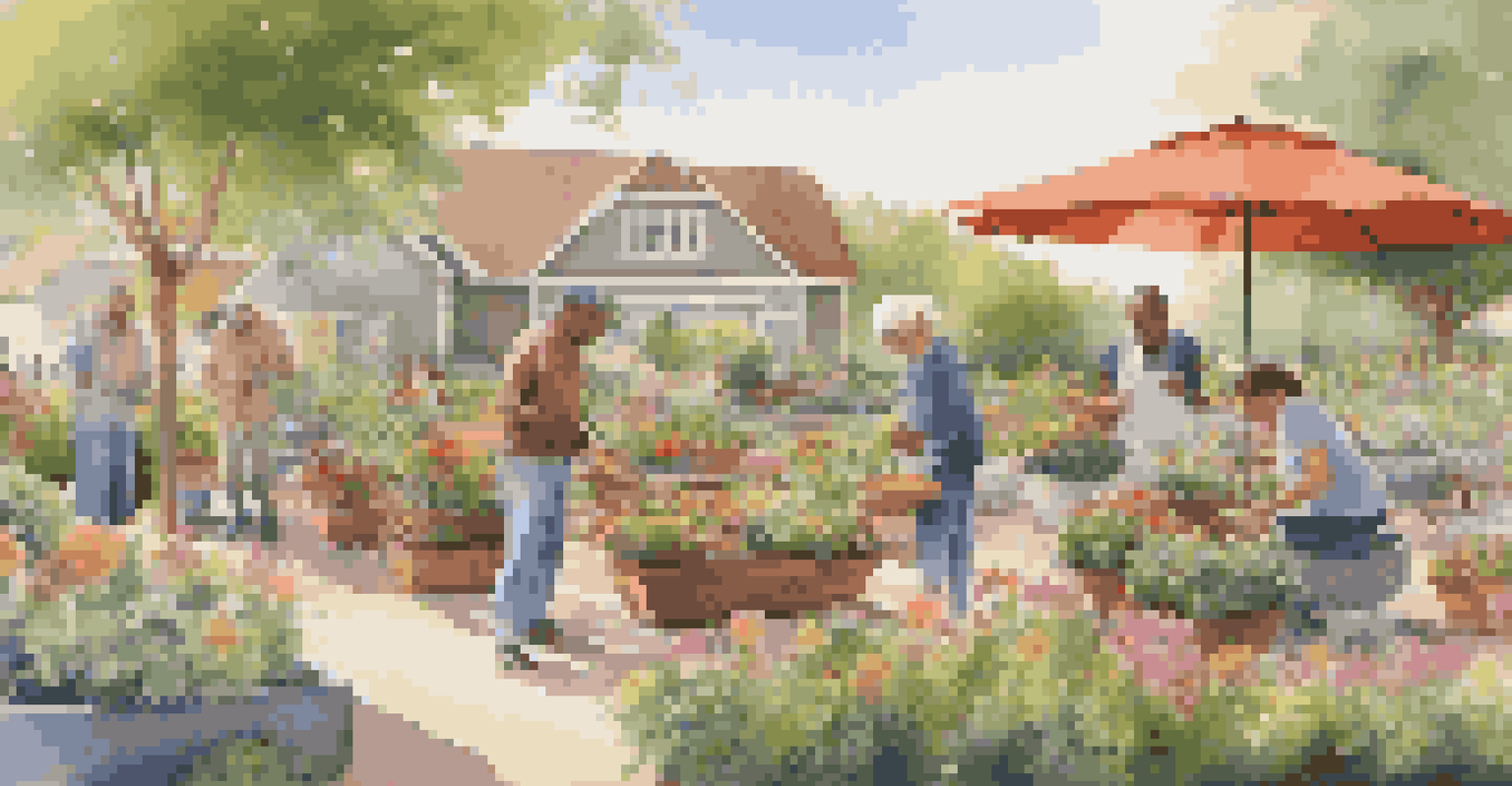The Role of Play in Fostering Community Through Art

Understanding the Concept of Play in Art
Play is often seen as a trivial activity, but in the realm of art, it serves as a powerful tool for expression and connection. When individuals engage in playful activities, they unlock their creativity, allowing for innovative ideas to blossom. This sense of playfulness encourages experimentation, making the artistic process more enjoyable and less intimidating.
Every artist dips his brush in his own soul, and paints his own nature into his pictures.
Art, in its many forms, provides a unique platform for play, whether it's through painting, sculpting, or performance. Participants can engage without the fear of judgment, fostering an environment where ideas can flow freely. This liberating aspect of play allows communities to explore their cultural narratives and shared experiences in a fun and engaging manner.
Ultimately, play in art is about breaking down barriers and inviting everyone into the creative process. When individuals feel free to express themselves, they often find common ground with others, paving the way for deeper connections within the community.
The Importance of Community Engagement in Art
Community engagement is essential to the success of any artistic endeavor. When community members come together to create, they not only share their skills but also their stories and perspectives. This collaboration fosters a sense of belonging, as participants feel valued and heard in their contributions.

Art projects that involve community participation often reflect the collective identity of the group, making the artwork a representation of shared values and experiences. This bond strengthens community ties, as individuals work towards a common goal, ultimately creating a sense of pride in their collective achievements. Whether it’s a mural on the side of a building or a community theater production, these projects bring people together.
Play Enhances Community Connection
Engaging in playful art activities fosters creativity and builds deeper connections among community members.
Moreover, engaging in art as a community can serve as a catalyst for social change. By highlighting local issues through creative expression, communities can raise awareness and inspire action, making art a vehicle for transformation.
Exploring Different Forms of Playful Art Activities
There are countless ways to incorporate play into artistic practices, and each form can contribute to community building. For instance, collaborative mural painting invites residents to physically and emotionally invest in their environment, transforming blank walls into vibrant expressions of community identity. This not only beautifies the space but also engenders a sense of ownership among participants.
Art is not freedom from discipline, but disciplined freedom.
Workshops that focus on playful art techniques—like improvisational theater, dance, or crafting—allow individuals to explore their creativity in a supportive setting. These activities often lead to laughter and bonding, creating lasting memories and friendships. The joy of play can diffuse tension and allow for open communication, which is vital for community cohesion.
Additionally, community art festivals that feature interactive installations encourage visitors to engage directly with the art. This playful approach invites everyone, regardless of age or experience, to participate, bridging gaps and fostering connections across diverse groups.
Building Trust Through Collaborative Artistic Projects
Trust is a cornerstone of any thriving community, and collaborative artistic projects are an excellent way to build it. When individuals work together on a creative endeavor, they learn to rely on one another's strengths and perspectives. This shared experience nurtures relationships and cultivates a supportive atmosphere where everyone feels comfortable expressing themselves.
For example, community gardens that incorporate art can serve as both a green space and a creative outlet. Residents can collaborate on planting, maintaining, and decorating the garden, allowing for a sense of shared responsibility and investment. Over time, these interactions foster trust and camaraderie among participants, creating a stronger sense of community.
Art Reflects Community Identity
Art serves as a mirror for communities, allowing individuals to express and explore their unique cultural narratives.
As trust grows, so does the willingness to engage in further artistic and community initiatives. This cycle of collaboration not only enhances artistic expression but also helps address broader community issues, making the power of play in art truly transformative.
Art as a Reflection of Community Identity
Art often serves as a mirror reflecting the values, struggles, and dreams of a community. Through playful artistic expressions, individuals can explore and convey their unique cultural narratives. This exploration can lead to a deeper understanding and appreciation of the diverse backgrounds that make up the community.
For instance, storytelling through theater or visual arts can highlight local histories and shared experiences, fostering pride and unity. When community members see their stories represented in art, it validates their experiences and strengthens their connection to one another. This sense of representation is crucial for fostering inclusivity and belonging.
Moreover, as communities evolve, so too does their artwork. Playful engagement in art allows for the continuous redefinition of community identity, as new voices and perspectives are integrated into the narrative. This dynamic nature of art helps communities adapt and thrive in an ever-changing world.
The Impact of Art on Mental Well-Being
Engaging in playful art activities has been shown to have a positive impact on mental well-being. The act of creating allows individuals to express emotions and alleviate stress, serving as a powerful outlet for processing feelings. This therapeutic aspect of art can be especially beneficial in community settings, where shared experiences can enhance emotional support.
Participating in group art activities fosters social connections, which are vital for mental health. When individuals come together to create, they often find solace in shared experiences, reducing feelings of isolation. The joy and laughter that arise during these playful moments can significantly uplift spirits, creating a sense of community that combats loneliness.
Art Boosts Mental Well-Being
Participating in collaborative art activities can significantly improve mental health by reducing isolation and fostering social connections.
Furthermore, art can serve as a vehicle for dialogue about mental health within communities. By openly expressing emotions through art, community members can foster understanding and empathy, breaking down stigma and encouraging conversations about mental well-being. This creates a supportive environment where individuals feel empowered to seek help and share their experiences.
Conclusion: The Lasting Power of Play and Art in Communities
In conclusion, the role of play in fostering community through art cannot be overstated. Through playful engagement, individuals not only express their creativity but also build connections that strengthen their community fabric. The collaboration that arises from shared artistic experiences cultivates trust, understanding, and a sense of belonging.
As communities continue to navigate challenges, the playful nature of art can serve as a beacon of hope and resilience. By embracing creativity, individuals can come together to celebrate their unique identities and collective journeys. This shared joy in artistic expression can lead to lasting change, inspiring future generations to engage in the power of play.

Ultimately, when communities harness the transformative potential of play in art, they create vibrant spaces where everyone feels valued and connected. As we continue to explore the intersection of play and art, let’s remember that the heart of community lies in our shared experiences and the joy we find in creating together.